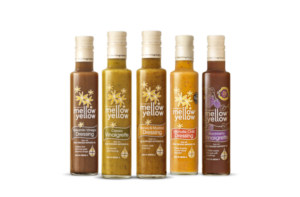What is carbon sequestration?
“Carbon sequestration is the long-term removal of carbon dioxide from the atmosphere to be stored in plants, soils, geologic formations or oceans.”
This sentence very simply defines what carbon sequestration is, but I will explain a bit more about what it actually means and how soils and sustainable farming practices can have a major impact on reducing global warming by reducing the carbon dioxide (CO2) levels in the atmosphere.
Soil carbon sequestration is a natural process powered by growing plants, through the process of photosynthesis. Plants photosynthesise with the energy from sunlight, taking CO2 out of the atmosphere and converting this into new plant material, both above and below the soil surface, locking up the carbon and releasing the oxygen back to the atmosphere. The process works in symbiosis with the minerals, water, bacteria, fungi and other organisms in the soil. Plants grow, die and decay, feeding the soil and the life within it. Over the long term, CO2 is removed from the atmosphere, locked into the soil and, stored in the plants. This is carbon sequestration and the soil is known as a carbon sink.
What is soil?
Soils are naturally made up of four different components, a typical soil consists of:
50% Mineral
20-25% Water
20-25% Air
1 to 12% Organic matter
Obviously, the specific percentages will vary from one soil to another and whether or not it is in wet or dry conditions for example. In winter soils will contain more water than in the summer. The organic matter is made up from all the living and dead material: bacteria, plant roots, dead leaf litter and animal manure for example. This organic matter is full of carbon that is locked in the soil. Different soils will have different soil organic matter (SOM) contents and therefore different carbon contents. For example, a sandy soil will have a low SOM of around 1%, where as a peat-based soil will be at the top end, with clay soils somewhere in between.
A bit of soil history
Around 10,000 years ago man evolved from being a hunter gatherer to a farmer as they started growing crops and grazing animals. They managed the soils, changing the natural habitat to one more favourable to their needs. Right from the first farmers, man has not been very successful at looking after our soils. In fact, every empire in human history has eventually failed due to starvation, mainly bought about by soil degradation. From the Roman Empire, to the more recent collapse of the Soviet Union.
President Franklin Roosevelt once stated, “A nation that destroys its soil, destroys itself.” Wise words indeed, based on thousands of years of proof. However, when Roosevelt made this statement, he was probably thinking of the dust bowls in the mid-west of the American prairies and the loss of the natural habitat caused by farmers ploughing up their land to grow crops. He was very aware of the nutritious soil literally being blown away and was no doubt aware that unless farming practices changed, in time this land would not be able to produce food. But he was probably not aware that the general degradation of the soil was also releasing many thousands of tonnes of CO2 into the atmosphere, adding to what we know today as Global Warming.
Traditionally farmers plough the land, a process to turn the soil over to create good conditions in which to plant the following crop or pasture. However, when the soil is moved intensely as it is in ploughing, the carbon that is locked into that soil is suddenly exposed to our oxygen-rich atmosphere, resulting in the carbon combining with the oxygen to make carbon dioxide, which is released into the atmosphere. At this point the soil changes from being a carbon sink (removing CO2 from the atmosphere) to become a carbon source (releasing CO2 into the atmosphere). Over a few short decades, soils will lose their carbon content and thus reduce the soil organic matter, not only releasing global warming CO2, but also making the soil less nutritious and resilient to extreme weather conditions, which is not good for the farmer.
How are we improving our soils on Bottom Farm?
There is a better way we can grow our crops and graze our animals, using sustainable practises carried out by the likes of LEAF farmers (Linking Environment And Farming). These sustainable farming practises have three crucial but simple requirements to make soils healthy:
– Reduce soil disturbance from intensive cultivation and ploughing
– Keep something growing in the soil all year
– Vary the crops and livestock grown on the soil
By reducing cultivation, and especially ploughing of the soil, the loss of CO2 is greatly reduced. By keeping something growing in the soil as long as possible, not only are the plants utilising the power of the sun, photosynthesising and actively absorbing CO2 from the atmosphere, but the roots are feeding all the microbes in the soil to keep a healthy biodiversity. Finally, by varying the crops and livestock grown on the soil, the farmer better mimics what would happen in nature keeping the soil in good health.
If farmers follow these simple principles, they can again turn the soil back into a carbon sink, sequestering carbon in the soil and increasing the soil organic matter. I have done this on our farm over the last two decades and on one field which I have been monitoring, I have increased the soil organic matter from 3.8% to 6.3% between 2002 and 2016. To put this into context, if every farmer around the world practiced sustainable soil principles, our soils have the ability to remove 1 trillion tonnes of CO2 from the atmosphere, taking us back to pre-industrial levels. So, the prize is extremely big and very worthwhile aiming for.

 Oils
Oils Rapeseed Oil
Rapeseed Oil Chili Oil
Chili Oil Dressings
Dressings Blackberry Vinaigrette
Blackberry Vinaigrette Classic Vinaigrette
Classic Vinaigrette Balsamic Dressing
Balsamic Dressing Honey & Mustard
Honey & Mustard Ultimate Chilli Dressing
Ultimate Chilli Dressing